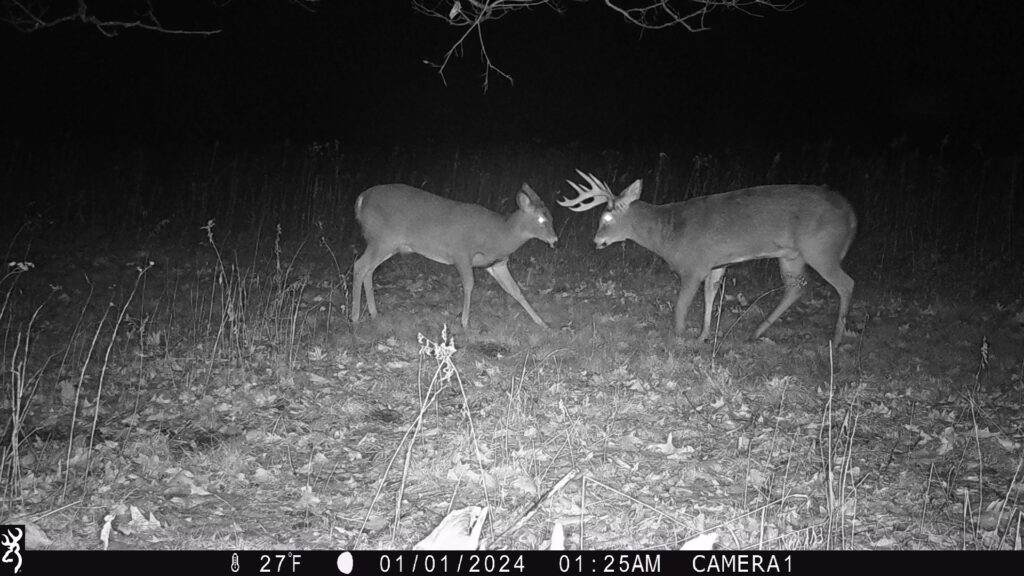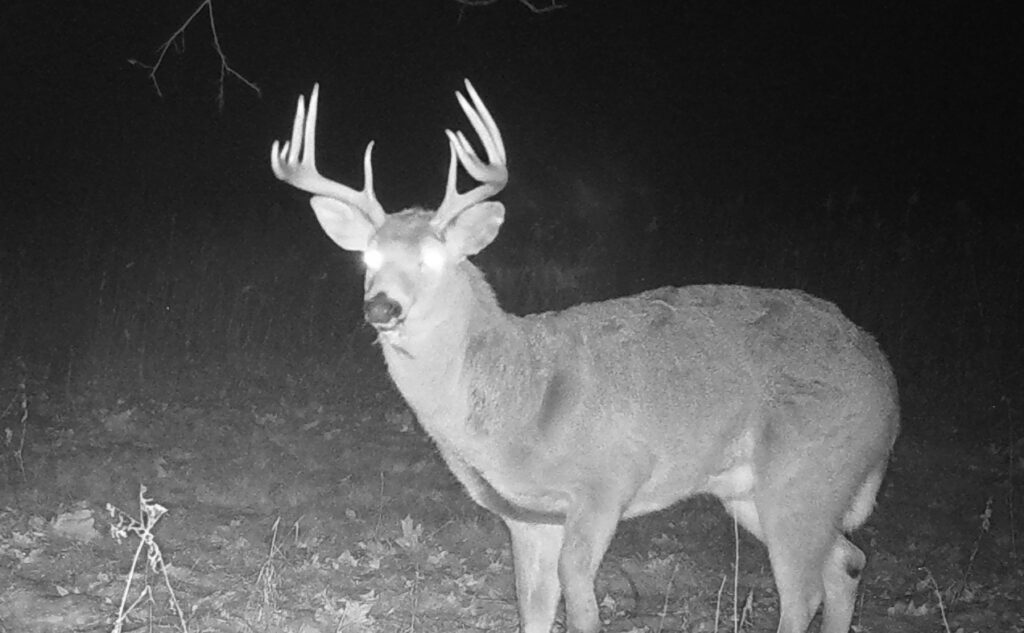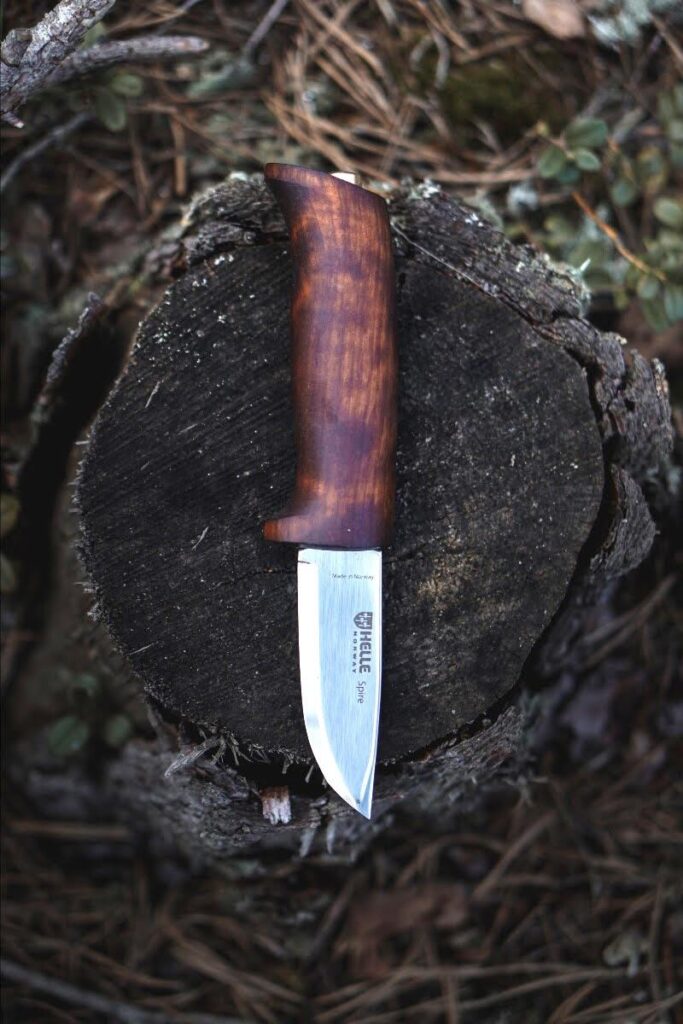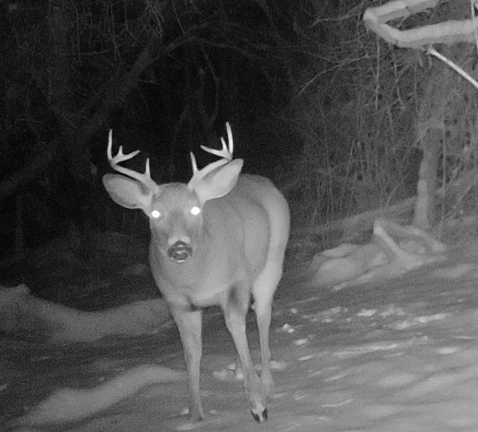“Do bucks travel for miles, or are they more or less homebodies, living on the same hill?”
By Oak Duke
Back in the day, 50 years ago, it was common to hear deer hunters have wildly different notions about buck movement… specifically: what size is a buck’s home range?
Where they live most of their time?
Some deer hunters believed, and undoubtedly still do, that bucks have a relatively small home range, maybe as low as a few hundred acres and never move much from it.
Other serious whitetail hunters, on the other extreme, adamantly believe that bucks have a home range that spans miles, many times larger than the stay-at-homers do.

Use Discount Code for 5% savings FORGE5
What’s the truth?
Where does the truth lie, more on the side of the smaller home range advocates or those that are proponents of the larger territory?
Do bucks travel for miles, or are they more or less homebodies, living on the same hill?
Both sides have been able to cite research over the years, whether scientific or anecdotal to support their views.
Science, aided by new technology that we could only have dreamed about, just a few decades ago, is illuminating the subject of buck home ranges.
Recently, new whitetail research in one of our southern states has focused on this very question and put together a huge project with GPS collars on upwards of 60 different adult bucks, with ages beginning at 2.5 years and up…so these are in many cases mature male animals.

Younger bucks of course behave differently, from buck fawns that hang with their mothers in a doe group for their first year or so (some stay under their mom’s skirt for a bit longer,) to yearling bucks that most always evidence dispersal patterns that in some cases have shown by early GPS research, that these young whitetail bucks travel for numerous miles, some up to a 100 miles from the woods they were born in.
These younger classes of bucks (fawns and yearlings) were not included in this new whitetail buck movement study. If they had, they would have of course skewed the data, as the focus was on adult bucks only, and not female deer either.
Surprisingly, on the subject of adult buck’s home ranges, both sides of the age-old argument appear to be right!

The GPS study, conducted by researchers at the Mississippi State University deer lab have defined two basic types of bucks, one being what is termed a Sedentary buck and the other a Mobile buck. The former with a home range of about 700 acres, and the other with two distinct home ranges, with the average being four miles apart.
So the answer is that both sides are right.
There is a tremendous amount of variability in bucks home ranges, from homebodies that remain in a small territory, and other adult bucks that move surprising distances to reach their second home range.
This study, conducted in Mississippi, may or may not reach conclusions that are perfectly applicable to our whitetails here in the Northeast, specifically in Western New York state.
For one thing, the peak of the whitetail rut or breeding season is a full one month later there in the study area (central Mississippi) than here in the north where our whitetails are on an October-November breeding timetable. In Central Mississippi the whitetail rut peak is December-January.
Interestingly, on the subject of Buck Excursions, or when adult bucks go on a “vacation” or sabbatical for a few days and may travel a mile or more from their home range, Sedentary bucks, those with one home range, go on excursions much more than do Mobile bucks.
That’s when we see popping up on our trail cameras new bucks and then never see them again, bucks from out of our area on an exploratory mission.
The MSU deer lab study shows that bucks on excursion are greatest leading up to peak rut and in the months of February and March, right after the southern breeding season, then the incidence of excursions drops off dramatically in the following months.
However, that timing would be four months after the rut here, in the northern latitudes and would probably vary in at least timing and therefore not be applicable.
We could expect buck excursions (when we would see or get a trail cam photo) of a buck from out of the area, during October, November, December, or January, if the pattern held true.
So some of the conclusions of the southern study might not fit precisely, other than that whitetails are extremely variable in behavior, not only from one part of the country to the other, but from individual to individual.
Oak Duke/Wellsville, NY/ February 2024
Facebook pages:
Whitetail Page: www.facebook.com/Oak.Duke.whitetail.page
Duke’s Honey: www.facebook.com/Dukes-Honey-513590015445371/








